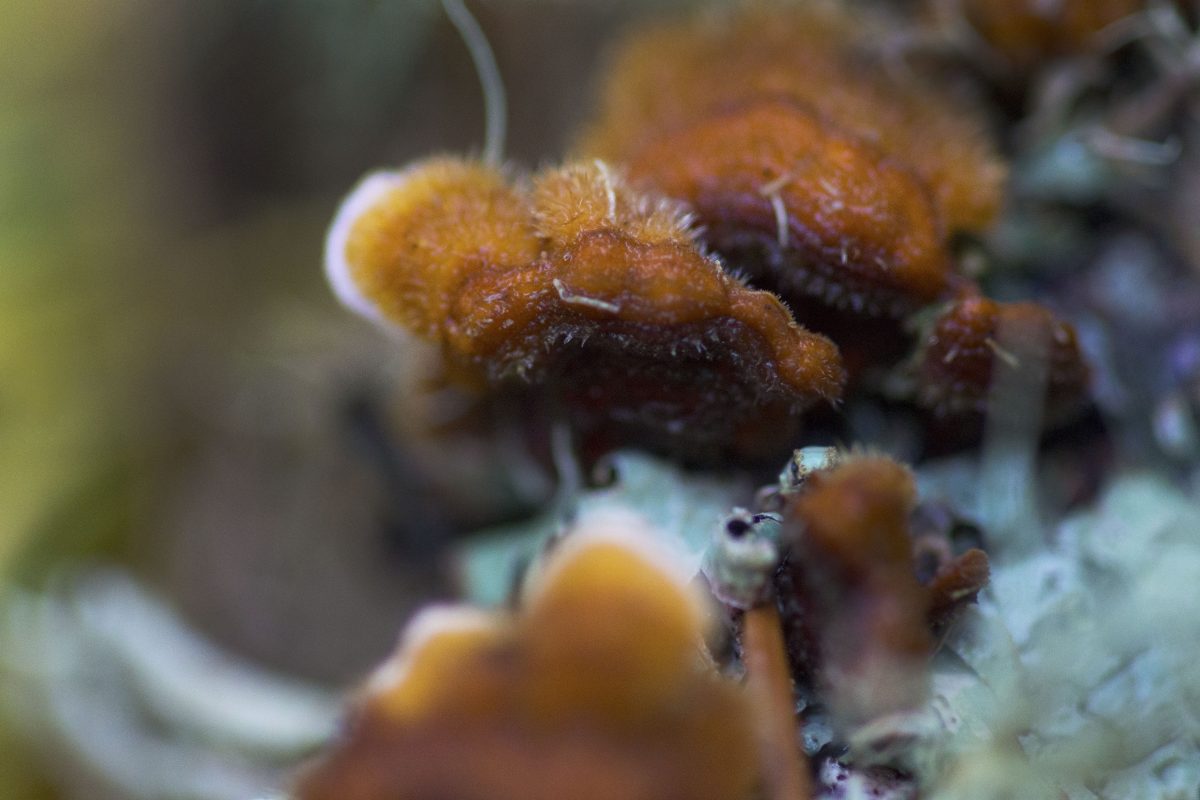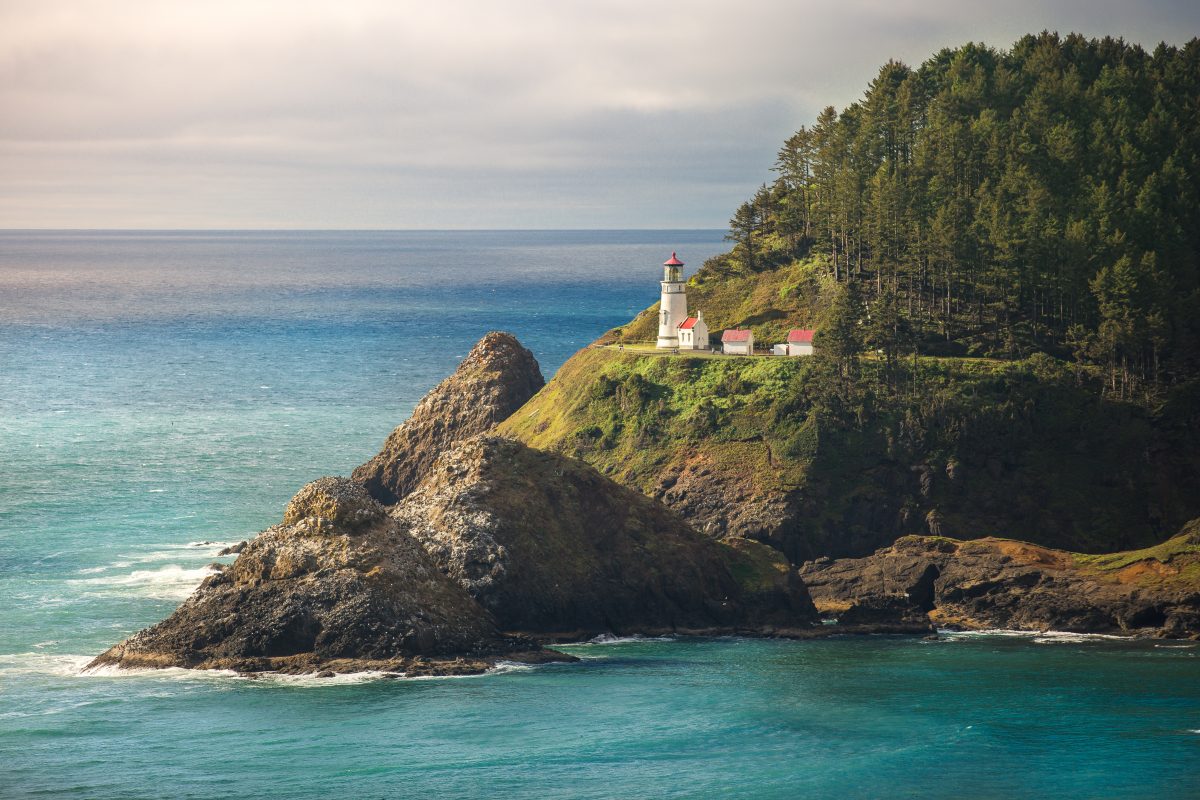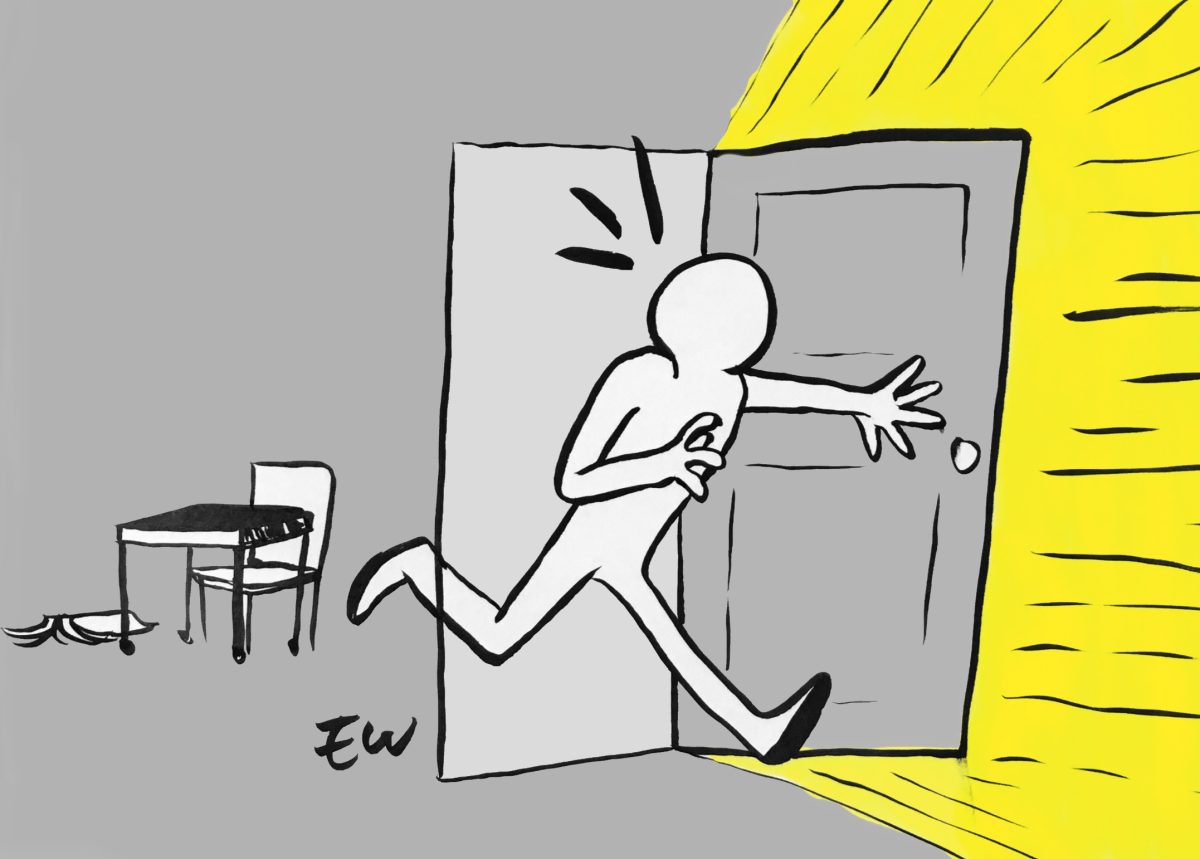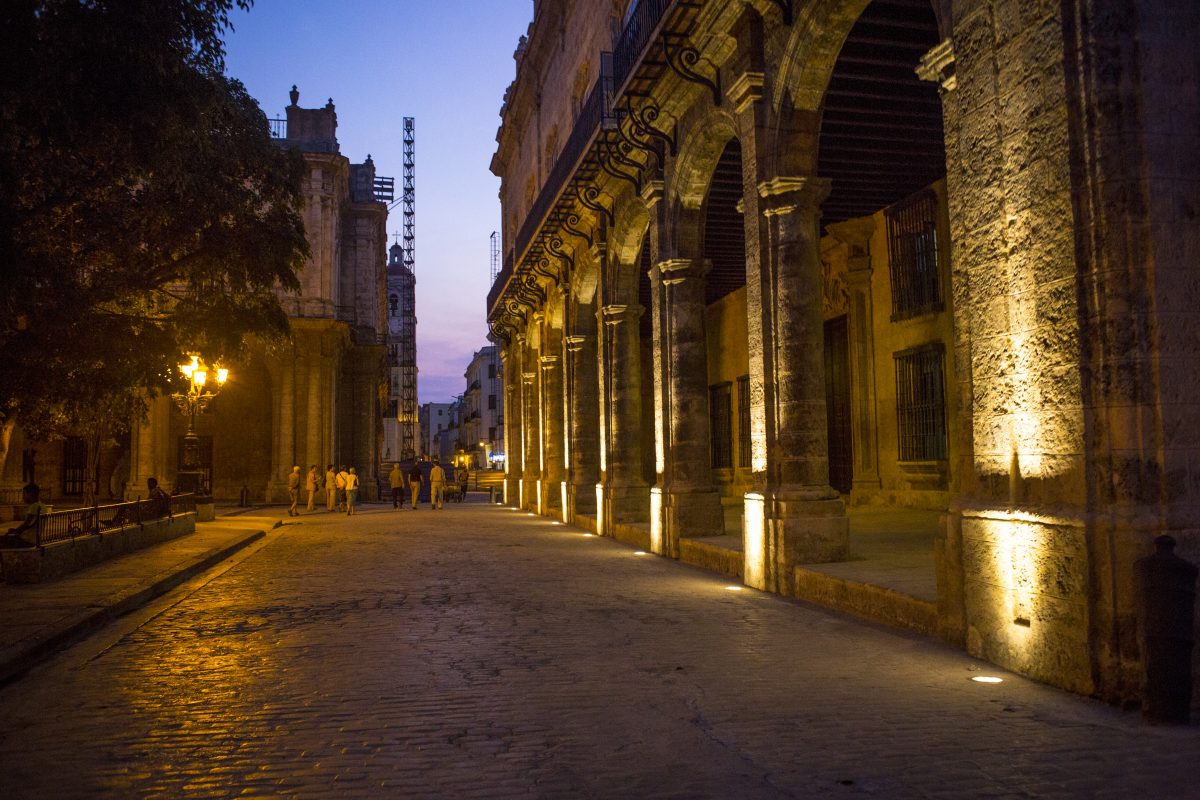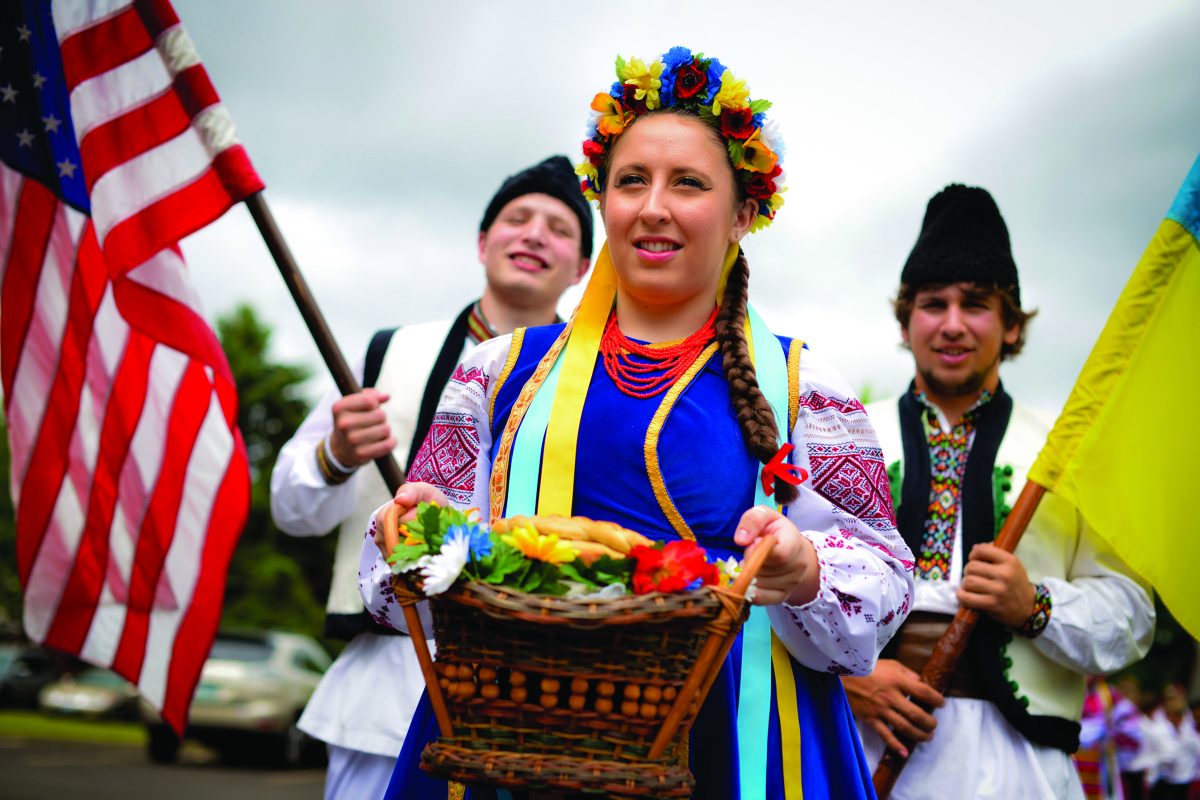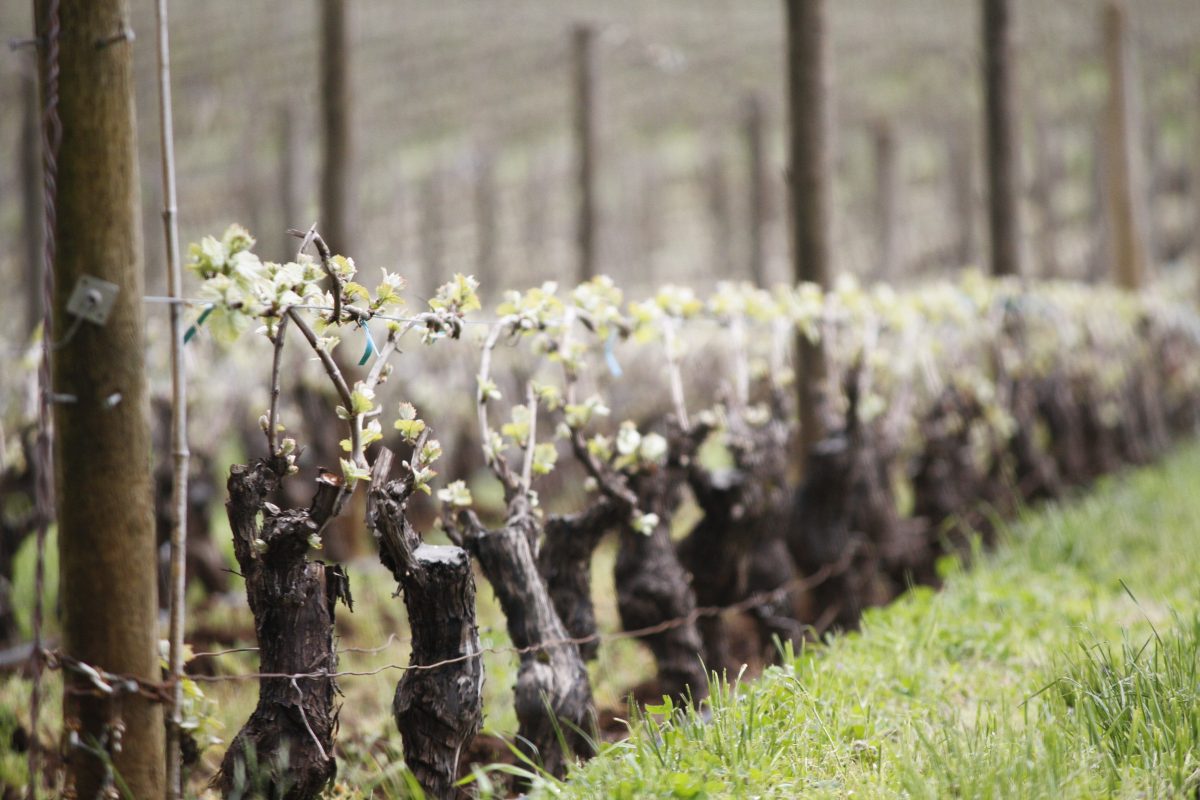Story by Sam Smargiassi
Photos by Nicole Allen
Imagine being deep in a thick forest with no real sense of direction. The air is cold and wet against your face while large drops of water fall on you from the tree limbs hanging above. There is no trail in sight and you trudge your way through the soft and nearly untouched forest floor. There are immeasurable amounts of life breathing around you. Creatures might be watching you because your eyes are glued to the ground; you wouldn’t dare miss out on that tempting, lush and, of course, delicious wild fungi. Whether you call it mushroom hunting, picking, foraging or even chasing, for those who love the forest there is nothing more rousing.
“It is the easiest type of hunting ever because your prey doesn’t run away,” Muhammad Khalifa says. A self-taught mushroom hunter and biochemistry student at the University of Oregon, Khalifa has experienced most of his luck hunting mushrooms further from the forest than he anticipated. “We’ve driven hours and hours to go into the woods for chanterelles. We tried to go east of the Cascades to find morels. But, the most successful mushroom hunts we’ve had have been on campus,” he says.
“It is the easiest type of hunting ever because your prey doesn’t run away,” Muhammad Khalifa says. A self-taught mushroom hunter and biochemistry student at the University of Oregon, Khalifa has experienced most of his luck hunting mushrooms further from the forest than he anticipated. “We’ve driven hours and hours to go into the woods for chanterelles. We tried to go east of the Cascades to find morels. But, the most successful mushroom hunts we’ve had have been on campus,” he says.
Some of the most delicious mushrooms remain frustratingly elusive for connoisseurs; many simply refuse to grow under farmed conditions. But as it turns out, the University of Oregon’s wet and arboraceous campus is extremely habitable for fungi. Fairy ring mushrooms are sprinkled all over campus, specifically around pine trees. But the area with the most variety and vitality is, ironically, the Eugene Pioneer Cemetery. Located just off campus, the 16-acre cemetery founded in 1872 is home to more than 5,000 burials. For fungi, the environment is perfect; for them, death leads to life. Without decomposing organic matter to feed on, mushrooms cannot grow. It’s in the cemetery that mushroom hunters find shaggy parasols, boletus, meadow mushrooms and a range of other fungal edibles.
In truth, mushroom hunting can be easy: Find the right spot, look down, and pick. However, the importance of identification cannot be stressed enough. Some species of poisonous mushrooms are deceivingly similar in appearance to their delicious, edible, and safe cousins. Without the right knowledge or a good identification key, mushroom hunting can be dangerous. All you need is a thick forest and an eye for fungi, some of which naturally camouflage themselves to the forest floor. For that reason, patience and skill are key.
In truth, mushroom hunting can be easy: Find the right spot, look down, and pick. However, the importance of identification cannot be stressed enough. Some species of poisonous mushrooms are deceivingly similar in appearance to their delicious, edible, and safe cousins. Without the right knowledge or a good identification key, mushroom hunting can be dangerous. All you need is a thick forest and an eye for fungi, some of which naturally camouflage themselves to the forest floor. For that reason, patience and skill are key.
Mushrooming is more than a hobby — it can be a way of life for those inclined towards outdoor activities. At the annual Mount Pisgah Mushroom Festival, many come to learn foraging skills necessary for a hunt. A Bluegrass band plays as crowds of attendees float from stall to stall sampling mushrooms and wafting earthy smells into their noses. Gladly trudging through mud and hay, people of all types — from white-collar workers to eccentric aging hippies — make their way into the forest for the showcase of what nature has to offer.
Molly Widmer and Chris Melotti, a couple whose relationship formed around their fascination with mushrooms, led a nature walk at the festival. Together, they harness a vast knowledge of numerous aspects of fungi, particularly in regards to identification. Widmer even wears a small magnifying glass around her neck to examine a mushroom’s cap, gills, and stem. She also carries a needle in the arm-pocket of her fleece so she can prick a mushroom to see if it might change color — a telltale identifier for some species. In this case, Widmer gently pricks a mushroom, hoping for it to change colors and it does.
Molly Widmer and Chris Melotti, a couple whose relationship formed around their fascination with mushrooms, led a nature walk at the festival. Together, they harness a vast knowledge of numerous aspects of fungi, particularly in regards to identification. Widmer even wears a small magnifying glass around her neck to examine a mushroom’s cap, gills, and stem. She also carries a needle in the arm-pocket of her fleece so she can prick a mushroom to see if it might change color — a telltale identifier for some species. In this case, Widmer gently pricks a mushroom, hoping for it to change colors and it does.
Widmer, is a botanist for the Bureau of Land Management and founding member of the Cascade Mycological Society, and Melotti is a wildlife biologist. The two became interested in fungi during the ‘90s as their fields of work began to examine mushrooms on a larger scale to better understand their importance to the ecosystems of Pacific Northwest forests.
“Both professions started to catch on to the fact that fungi were not only terribly important in general, but in this specific way are important to Pacific Northwest forests and northern spotted owls,” Widmer says. “It was ‘The owl eats the flying squirrel, flying squirrel eats the fungi,’ and that really broke some stuff open.”
During this time, the scientific community had done a lot of single species management, only recently beginning to look into habitats and the ways in which different species affect the forest. At this point it became clear that basic forest protection wasn’t taking care of small, yet important variables like fungi. As perspectives started to broaden to account for this issue, Widmer and Melotti started studying fungi and spread awareness of their importance. Soon after, Widmer founded the Cascade Mycological Society to do just that. “We didn’t want to go get a PhD, we just wanted to be in the woods and learn more about mushrooms and their role,” Widmer says. Today, they teach about mushroom ecology and hunting, leading many to the prized chanterelle mushroom.
“Both professions started to catch on to the fact that fungi were not only terribly important in general, but in this specific way are important to Pacific Northwest forests and northern spotted owls,” Widmer says. “It was ‘The owl eats the flying squirrel, flying squirrel eats the fungi,’ and that really broke some stuff open.”
During this time, the scientific community had done a lot of single species management, only recently beginning to look into habitats and the ways in which different species affect the forest. At this point it became clear that basic forest protection wasn’t taking care of small, yet important variables like fungi. As perspectives started to broaden to account for this issue, Widmer and Melotti started studying fungi and spread awareness of their importance. Soon after, Widmer founded the Cascade Mycological Society to do just that. “We didn’t want to go get a PhD, we just wanted to be in the woods and learn more about mushrooms and their role,” Widmer says. Today, they teach about mushroom ecology and hunting, leading many to the prized chanterelle mushroom.
Seasoned hunters use the phrase edible and incredible to describe the beloved chanterelle. The chanterelle is a beautiful, golden, flower-like mushroom that thrives around decomposing trees. They are so delicious that commercial pickers will pillage the forests, chasing down hundreds of dollars worth of mushrooms in a single day. For recreational picking it is best to find yourself as deep in the forest as possible, somewhere that hasn’t yet been reaped of its offerings.
Though chanterelles are tasty and abundant in the Pacific Northwest, it is important to acknowledge how mushrooms came to be and how much they influence nature. “If you like chanterelles, you like forests. Same thing with boletus or any high, choice edible mushroom,” Melotti says. “You can’t have them if you cut the forest down. Just collecting mushrooms is one thing but paying attention to what’s feeding you is another.”
Though chanterelles are tasty and abundant in the Pacific Northwest, it is important to acknowledge how mushrooms came to be and how much they influence nature. “If you like chanterelles, you like forests. Same thing with boletus or any high, choice edible mushroom,” Melotti says. “You can’t have them if you cut the forest down. Just collecting mushrooms is one thing but paying attention to what’s feeding you is another.”


